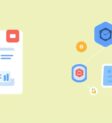
Artificial intelligence is rapidly evolving, and the rise of self-learning AI agents marks a significant milestone. These autonomous systems are transforming how machines adapt and optimize, enabling smarter automation and data-driven decision-making across industries. In this article, we’ll break down the fundamentals of self-learning AI agents, explore essential machine learning techniques, guide you through setting up your own AI environment, and share strategies for overcoming common challenges—empowering beginners to take their first steps into this exciting field.
Understanding Self-Learning AI Agents
Self-learning AI agents are sophisticated systems designed to independently enhance their performance by analyzing experiences, feedback, or environmental data—without requiring ongoing direct human programming. Unlike conventional AI models where developers must intervene and update instructions regularly, self-learning agents rely on algorithms that empower them to autonomously adapt, evolve, and continually optimize how they behave.
What truly sets self-learning agents apart is their built-in ability to process feedback, adjusting internal decision-making models in real time. Many employ machine learning techniques such as reinforcement learning, in which the agent receives rewards or penalties based on its chosen actions. Over time, this trial-and-error process leads to strategies that consistently achieve set objectives.
Everyday examples are all around us: streaming platforms use self-learning agents to provide spot-on content recommendations by analyzing viewing patterns, while warehouse robots continuously refine their routes for maximum efficiency through ongoing self-improvement algorithms. Voice-operated smart assistants also benefit, tailoring responses by learning individual preferences.
For newcomers, the power of self-learning AI agents lies in their reduced need for human oversight, swift adaptation to novel situations, and ability to detect patterns that even skilled humans might miss. This efficiency and adaptability are rapidly making self-learning AI agents the backbone of modern intelligent systems, with applications ranging from smart automation to advanced analytics.
Core Principles of Machine Learning for Self-Learning Agents
At the heart of a self-learning AI agent resides machine learning, a discipline of artificial intelligence centered on algorithms that empower systems to discover patterns and make smart choices by analyzing data instead of following explicit instructions. Every machine learning application consists of three foundational pillars: data, models, and learning algorithms.
Data acts as the starting point, supplying numerous examples for the agent to learn from. Models, typically mathematical frameworks, guide predictions and decisions. Meanwhile, learning algorithms systematically adjust these models to boost accuracy and performance. This adaptive cycle allows agents not just to remember but truly learn and improve.
Among machine learning’s many branches, reinforcement learning stands out for self-learning agents. Here, an agent interacts directly with its environment, performing actions and interpreting the results through rewards or penalties. Unlike other machine learning techniques that lean on static datasets, reinforcement learning relies on real-time feedback, promoting continuous, autonomous adaptation. The process mirrors human learning—shaped by accumulated experience and iterative feedback, paving the way for agents capable of high-level autonomous decision-making in complex, dynamic settings.
To dive deeper into the methods and benefits of guiding machine learning efforts in Dubai, explore our related resource on AI consultant Dubai.
Setting Up Your First AI Environment
Starting your journey into self-learning AI agents begins with choosing the right tools and platforms. For absolute beginners, environments like Google Colab and Jupyter Notebook offer user-friendly, browser-based solutions that make experimentation almost effortless. These platforms eliminate much of the installation hassle and provide interactive workspaces for coding, data exploration, and visualization.
Here’s a step-by-step guide to setting up a basic artificial intelligence environment:
- Install Python: Download the newest version of Python from python.org. Most contemporary AI tools are Python-based for their accessibility and rich library ecosystem.
- Pick Your Development Platform: Google Colab operates entirely in the cloud and needs no extra setup; for a local experience, install Jupyter Notebook using
pip install notebook. - Set Up a Virtual Environment: Keep your projects organized and avoid conflicts by creating a virtual environment:
python -m venv ai-envfollowed by activation steps for your OS. - Install Essential Libraries: For those using TensorFlow, the command
pip install numpy pandas matplotlib scikit-learn tensorflowcovers the basics. If you prefer PyTorch, usepip install torch. - Test Your Setup: Open your platform and try importing the installed libraries. For example, run
import tensorflow as tf; print(tf.__version__)in a notebook cell. - Explore Official Tutorials: TensorFlow and PyTorch both offer comprehensive beginner guides and sample projects to help you hit the ground running.
By following these steps, you’ll be ready to experiment—exploring datasets, constructing simple models, and taking the first hands-on steps toward building your own self-learning AI agent.
Building the “Brain”: Designing the Learning Algorithm
Every self-learning AI agent is powered by an algorithm—a core set of rules that enable the system to update itself and improve over time. Choosing the right learning method is pivotal, especially for beginners eager to understand how machines acquire intelligence.
Let’s review the three most common approaches:
- Supervised Learning: Train your agent using labeled data (where both the input and desired output are known). Starters like linear regression, logistic regression, and decision trees provide a manageable introduction, helping beginners see firsthand how machines can predict outcomes or categorize data after enough exposure and training.
- Unsupervised Learning: Here, the agent works with data that lacks explicit outputs, seeking hidden structures or groupings instead. K-means clustering and principal component analysis (PCA) are good starting points, letting your agent discover natural patterns without direct guidance—handy for grouping, recommendation, or anomaly detection.
- Reinforcement Learning: Emulating how humans and animals learn, your agent makes decisions, receives real-time feedback, and iteratively optimizes behavior to maximize reward. Algorithms like Q-learning are approachable for newcomers and essential for building agents that thrive in dynamic settings.
Open-source libraries such as scikit-learn and TensorFlow include these foundational algorithms, offering accessible examples and encouraging exploration. Start with simple problems and stepwise complexity—each iteration strengthens your conceptual foundation and sharpens your agent’s intelligence. For custom guidance on matching learning algorithms to specific business or operational challenges, you might consider engaging with Custom AI solutions Dubai.
Training a Self-Learning AI Agent: Data Collection, Learning Cycles, and Iteration
The journey of self-learning AI hinges on robust data collection, strategic training, and diligent iteration. Begin by capturing or sourcing quality data that truly reflects the intended problem space. This could involve tracking user behaviors, running simulated environments, or leveraging open-access datasets, each tailored to your application’s needs. The key is diversity—cover as many scenarios, edge cases, and variables as possible to train agents that are genuinely adaptable and fair.
Data organization follows: separate your samples into training, validation, and test sets. This classic partitioning helps prevent “overfitting”—where the agent becomes too narrowly focused on its training examples, losing generalization capability. Use learning cycles (epochs for supervised learning, episodes for reinforcement learning) to repeatedly expose agents to the data, refining model parameters through each cycle.
Continuous improvement is the goal of self-learning systems. After each training cycle, analyze validation results, pinpoint performance gaps, and iterate. You might need to expand your dataset, tweak model hyperparameters, or design new reward schemes for reinforcement agents. It’s essential to regularly audit your data pipelines and learning routines, ensuring that your AI agent stays resilient and relevant as new situations and data sources emerge. For businesses scaling up these processes, professional services around AI integration can streamline everything from robust data ingestion to multi-agent system deployment.
Common Challenges and How Beginners Can Overcome Them
Embarking on a self-learning AI agent project brings unique hurdles, particularly for those just starting out. Common beginner challenges include grappling with complex algorithms, difficulty selecting quality datasets, and trouble interpreting model results. Another widespread obstacle is the lack of a solid mathematical background (probability, algebra) and confusion about the sheer variety of machine learning frameworks available.
Here’s how to overcome these barriers:
- Master the Basics: Strengthen your foundation by reviewing core programming, linear algebra, and probability. Resources from Khan Academy or introductory university courses can be invaluable.
- Use Accessible Datasets: Practice on standardized datasets like MNIST for image recognition or the Iris dataset for classification, both of which are well-documented and manageable for beginners.
- Participate in Structured Learning: Platforms like Kaggle and Coursera offer hands-on projects, step-by-step tutorials, and community competitions, cultivating practical experience.
- Leverage Support Networks: Online forums (Stack Overflow, AI Discord channels) and peer study groups help you promptly resolve technical and conceptual roadblocks.
- Set Realistic Goals: Break down projects into achievable milestones, track progress, and gradually expand into more advanced areas like deep learning or complex reinforcement learning—staying motivated by your visible growth as skills accumulate.
Continual engagement, incremental learning, and community participation are pivotal in ensuring a smooth journey toward building high-performance self-learning AI agents. For mentorship and tailored onboarding into advanced artificial intelligence projects, connecting with an AI strategy consultant can accelerate your progress.
Conclusion
Self-learning AI agents are revolutionizing how machines interact with their environments, make decisions, and continuously improve. By mastering the basics of data collection, learning algorithms, and iterative model development, even beginners can harness the transformative power of autonomous agents. Overcoming the learning curve isn’t always easy, but with accessible tools, structured guidance, and an experimental mindset, anyone can unlock future-ready skills in AI. Start with simple projects, celebrate each improvement, and stay curious—your journey into artificial intelligence is just beginning.
For more insights on implementing artificial intelligence in business and technology landscapes, see our comprehensive development guide.






